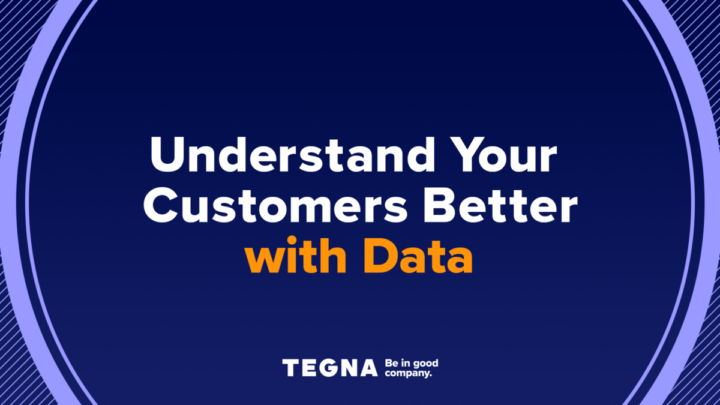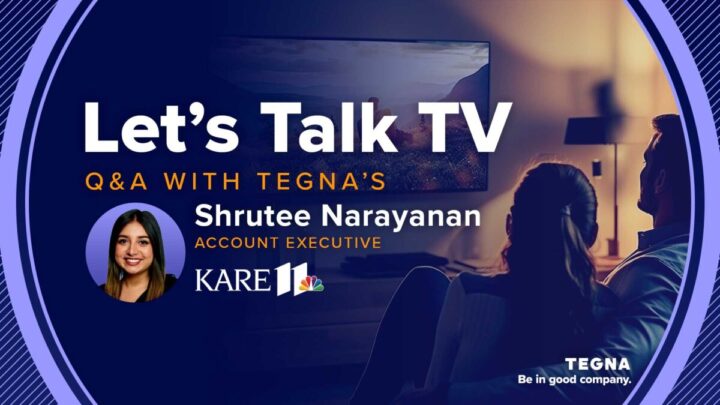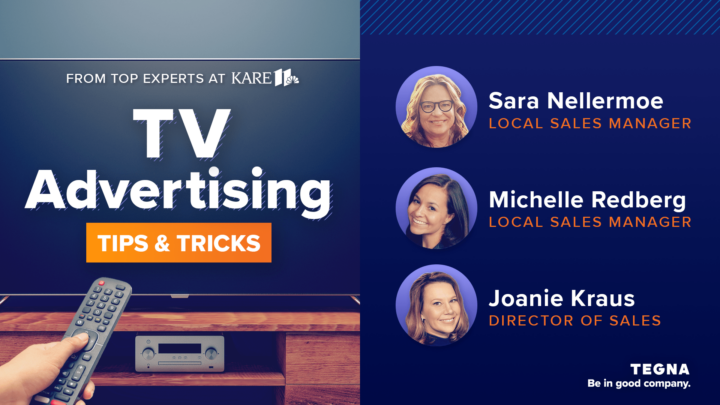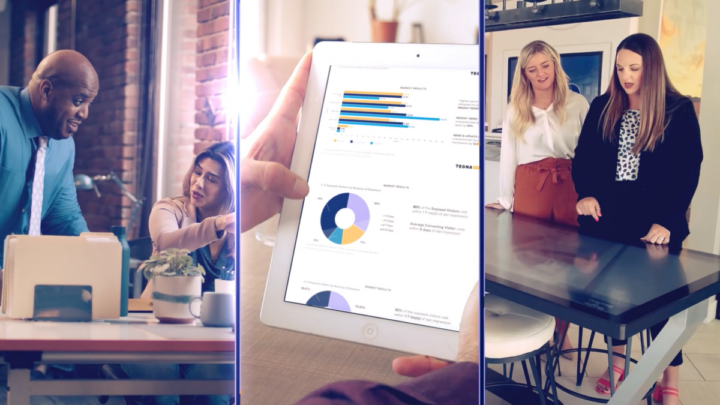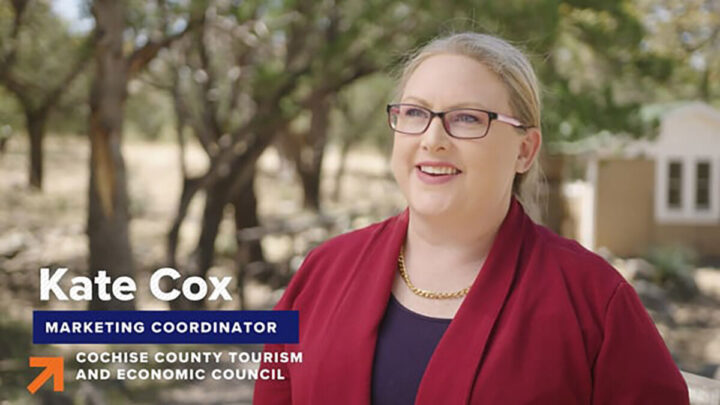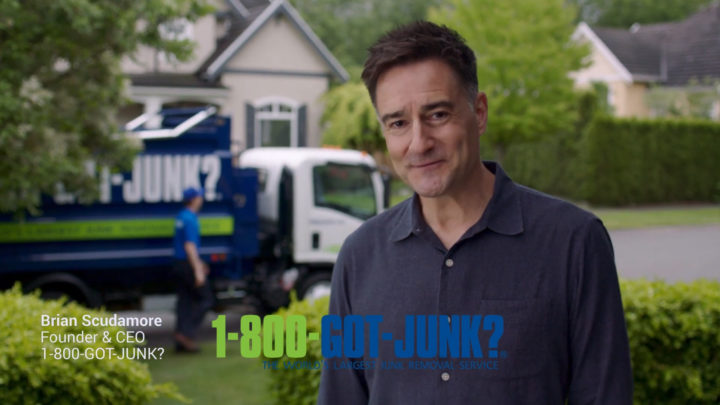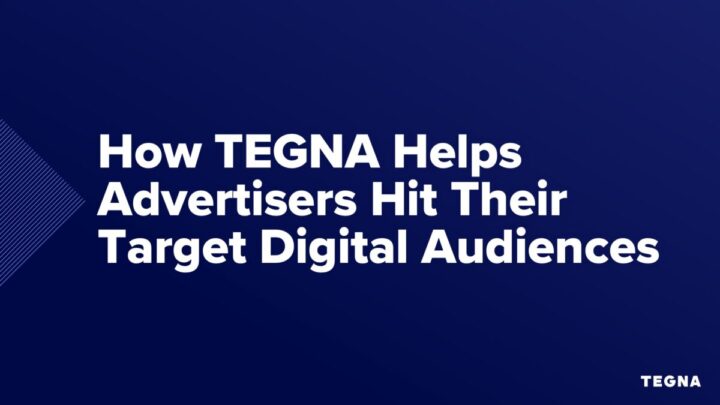5 Local Digital Advertising Strategies for Businesses
Local digital advertising is an excellent tool for businesses looking to connect with prospective customers in the community. Learn more.
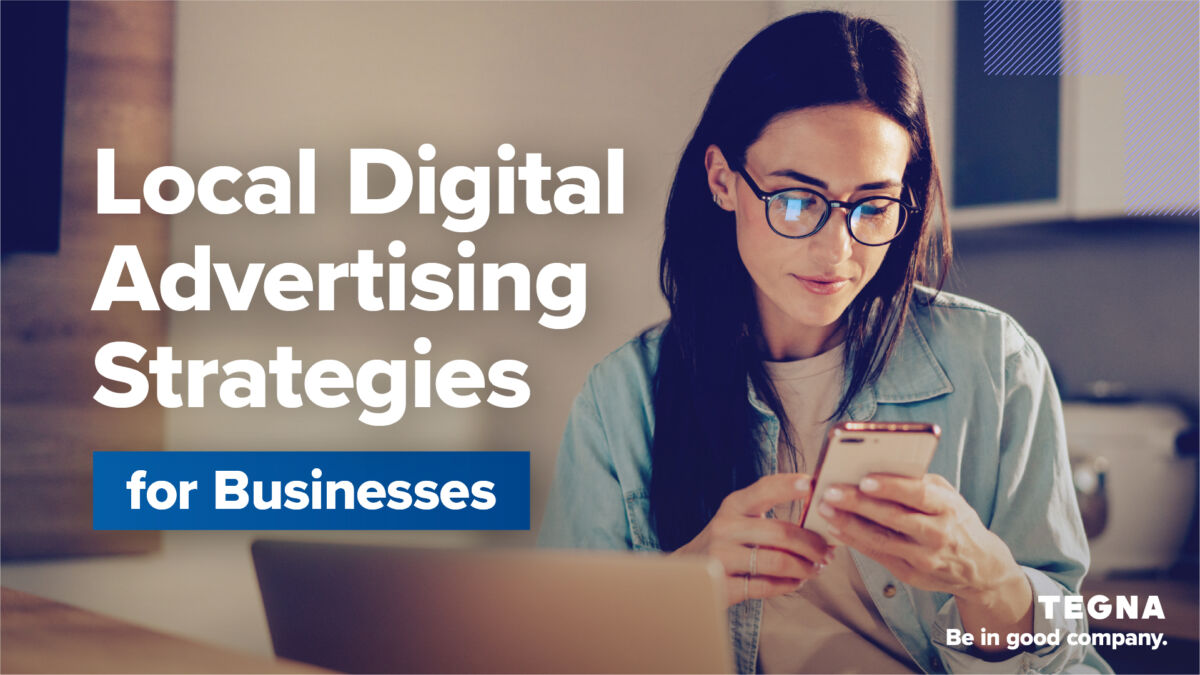
Today’s consumer is more involved in their local community than ever before, making it imperative that brands looking to grow business be involved in their community too. These communities can be physical locations, such as an entire neighborhood or a community gathering place like the local coffee shop.
But local communities can also be online. Here are our tips for reaching these online communities to help your brand create awareness, increase consideration among local consumers, drive sales, and grow business.
What is Local Digital Advertising?
Local digital advertising refers to a handful of tactics your brand can use to reach a target audience online. The ads themselves can take on many different formats and publish on a variety of different channels. For example, your brand can run sponsored video content on your local news channel’s website, post a user-generated review on social media, then distribute via email newsletter, or have your website appear at the top of results pages on Google.
As the online world continues to grow, there are several advantages to leveraging a local digital advertising strategy, and several brands have seen it boost engagement and sales.
How to Implement Digital Marketing in a Local Area
Creating a digital strategy is imperative if your brand wants to reach local audiences. According to Insider Intelligence, digital media is where adults consume the most media, expected to account for 65% of total consumption by 2024. Here are a few tips for creating an effective digital campaign.
1. Understand your Target Audience
First-party data is a valuable and cost-effective way to learn about your target audience and ideal customer as we enter a cookie-less marketing world. You can collect this data through customer feedback, surveys, CRM data, social media, email lists, and analytics. Once collected, the data could provide insights into customer lifecycles, allow for retargeting opportunities, help you break into new markets, develop new products, and more.
Hypothetically, let’s say that you’re a local retailer collecting first-party data and advertising within a specific DMA. Looking at clicks and conversion rates on your website, you can see an influx of website visits from a DMA outside of the ad campaign. What do you pull from this insight? It could mean it’s time to add a second DMA to your campaign targeting to meet your audience where they are.
For more best practices on getting to know your target audience, check out our guide to Understanding Your Customers Better With Data.
2. Video Reigns Supreme
Video is a critical piece to the digital marketing puzzle, evidenced by HubSpot’s findings:
- Audiences spent 19 hours per week watching videos online in 2022
- 96% of consumers watch explainer videos to learn more about products
- 89% are convinced to purchase after watching a brand’s video content
- 9 out of 10 people are eager to see even more video content from brands in 2023
Additionally, video can increase engagement with your creative and the shareability of your content on digital channels. For example, if you’re running digital video in partnership with your local broadcast news station, consider adding it to your YouTube, Facebook, or other social sites.
Digital video is a powerful tool that can positively impact many areas of your marketing strategy if planned and implemented correctly. Use these tips to create a compelling video ad campaign.
3. Cross-Promote
With your video created, why limit it to one format? Digital and TV advertising can offer a mutually beneficial relationship. A study by the Advertising Research Foundation (ARF) shows that brands, on average, can grow ROI by 19% by implementing a strategy that uses Linear TV and digital video. Using a budget with 78% spending on traditional media to 22% digital worked best for audiences. Be sure to include multiple channels in your media plan.
4. Retargeting
Retargeting provides an excellent opportunity to reach interested parties with multiple conversion options. With retargeting, cookies track a website user’s behavior and display ads as they crawl the web. For example, a user may visit your website without making a purchase. When they go to a different website the next day, they will see ads for your brand, reminding them of those fancy shoes they looked at.
While website tracking and privacy are hot topics, stats from Digital Information World show that retargeting isn’t as intrusive in the consumer’s mind as perceived:
- An average of 30% of shoppers react positively to retargeted ads
- 25% of those shoppers say they enjoy retargeted ads because they serve as helpful reminders.
- Nearly 72% of online shoppers will abandon their shopping carts. With retargeting, 26% of those shoppers will return to complete their purchase. Without retargeting, only 8% return.
Are you interested in learning more about what makes a retargeting campaign effective? This guide will break down the basics of retargeting and help you get started with adding retargeting to your next marketing campaign.
5. Measure Results
Another major perk of digital marketing is measuring the results of your campaign and optimizing them along the way. Setting clear campaign goals and objectives beforehand helps ensure you measure the right metrics aligned with your overall marketing objectives. Several key metrics and tools measure the performance of digital ad campaigns. Here are 10 of the most popular ones:
- Attribution: Understanding which ad or marketing touchpoints contributed to a conversion.
- Bounce Rate: The percentage of users who landed on your website but left without taking any further action.
- Click-Through Rate (CTR): The number of ad viewers who click on an ad and visit a website.
- Conversions: When a website visitor performs the desired action of the ad, such as someone purchasing through your website, filling out a form, or downloading a brochure.
- Engagement Metrics: Metrics that measure how users interacted with your ads, such as time spent, interactions (likes, comments, shares), and video completion rates (for video ads).
- Impressions: The number of times a target audience is exposed to an ad.
- Return on Ad Spend (ROAS): This metric breaks down ROI and measures the revenue earned from a specific campaign.
- Return on Investment (ROI): How much money did your campaign make compared to the money you put into it? ROI can be calculated by: ROI = campaign gain / overall campaign spend.
- Video Completion Rate (VCR): Also measured in streaming campaigns, VCR is the percentage of ads viewed from beginning to end.
- Website Visits: The number of visitors to a brand website.
Local Online Marketing Options
These methods are essential for brick-and-mortar businesses, local services, and professionals who want to attract nearby customers. Here are some effective local online marketing options:
Local News Websites
Consumers are active in their local community, and their local news station is where they turn to for the latest news, sports, traffic, and weather reports to inform their day. Digital advertising with your local news station’s websites and apps – such as 12News.com in Phoenix – can reach an engaged and loyal daily audience within a trusted, local community environment to increase brand awareness and drive conversions.
Contextual Advertising
Contextual advertising delivers relevant ads to users based on their activity and the content they are currently viewing. For example, if you’re reading an article about popular travel destinations and see a display ad for flight deals, you’ve been served contextual advertising. By aligning with a user’s interests and immediate online needs, contextual advertising increases the likelihood of engagement and conversion.
Display Advertising
Display advertising is a form of online advertising where visual advertisements, such as banners, images, videos, or interactive multimedia, are displayed on websites, apps, or social media platforms. These ads capture the target audience’s attention and promote products, services, or brands.
Native Advertising
Native ads are prevalent on websites, social media platforms, and mobile apps. Unlike traditional display ads, native ads don’t appear as separate promotional content. Instead, they integrate into a platform’s content feed. They are educational and informative, which is significant as survey data shows 70% of internet users favor learning about products through content rather than traditional advertising. Purchase intent is also 53% higher with native ads. Learn more about Native Advertising here.
Geofencing
Geofencing is a popular and effective way to turn local search traffic into foot traffic. Using GPS technology, advertisers can draw virtual fences around specific areas, such as a storefront, they want to target with ads, offers, and promotions. Once a prospect enters a geofenced area, mobile ads from that advertiser begin serving that user. Learn more about the ins and outs of geofencing here.
Paid Search
Also known as pay-per-click (PPC) advertising, paid search is a popular digital marketing strategy businesses use to drive traffic to their websites and generate potential leads or customers. This tactic allows advertisers to choose relevant keywords or phrases related to their products, services, or target audience. When users search for those keywords on the search engine, the advertiser’s ad may appear as a sponsored result.
Email Marketing
Email marketing is a digital marketing strategy that involves sending commercial messages or promotional content to a group of people via email. The primary goal of email marketing is to build relationships with current and potential customers, encourage customer loyalty, increase brand awareness, and drive sales or conversions. Email marketing can also take on several different forms: welcome emails, newsletters, drip campaigns, promotional messages, and abandoned cart emails are just a few.
Social Media Advertising
Often taking the form of images, videos, carousels, slideshows, or sponsored content, this paid advertising strategy aims to reach a target audience, promote products or services, and achieve specific marketing objectives on social media platforms. Some sites such as Facebook, Instagram, Twitter, LinkedIn, and Pinterest offer advertising options that enable businesses to target users based on their interests, demographics, behaviors, and online activities. Companies must understand their target audience, create compelling ad content, continuously test and optimize their campaigns, and adhere to each social media platform’s guidelines and best practices.
TEGNA is a Trusted Platform in Local Communities Across the Nation
In today’s media landscape, we know trust matters more than ever. Roughly 3 in 4 viewers have moderate–to–high levels of emotional trust in their local news organization. With 64 local stations in 51 markets, our trusted, local content informs, educates, and entertains communities throughout the day, from the moment they wake up and scroll through the latest headlines in our news apps as they make their way through the day, up until bedtime, catching up on the day’s headlines during our evening and late news programming.
What does that mean for brands advertising with the station and TEGNA affiliates?
By partnering with TEGNA for your next local digital campaign, your brand can easily benefit from the news-trust halo and see tangible results through simplified advertising solutions and local media options: Linear broadcast, OTT streaming, and digital marketing. From concept development to implementation and measurement, we offer the highest level of support as your marketing partner. Contact TEGNA and see how we can help you reach your marketing goals.
Frequently Asked Questions
What is the best way to advertise digitally?
Ultimately, you’ll want to test a variety of tactics and channels to see what types of digital campaigns work best for your brand, target audience, and budget. However, video is vital in reaching and persuading viewers to purchase, evidenced by HubSpot’s findings that 96% of consumers watch explainer videos to learn more about products, and 89% are swayed to buy after watching a brand’s video content. Better yet, video can also be used in more than digital campaigns, such as on Linear and Streaming TV.
How does digital advertising compare to television advertising?
TV advertising remains an effective way to reach a large audience, and digital marketing tactics serve as the perfect complement when weaved into a multi-channel campaign. A study by the Advertising Research Foundation (ARF) shows that brands, on average, can grow ROI by 19% by implementing a strategy that uses Linear TV and digital video. Using a budget with 78% spending on traditional media to 22% digital worked best for audiences.
Which industries can benefit from local advertising?
Any business that relies on a local customer base and wants to establish a strong presence within its community can benefit from local advertising. It allows them to connect with potential customers directly, promote relevant offers, and build long-lasting relationships with the local audience. A few examples of industries that typically see success with local advertising include, but are not limited to, retail, restaurants and cafes, home services and home improvement, real estate, health and wellness, automotive dealerships, events and entertainment, travel and tourism, educational institutions, and non-profit organizations.
Today’s consumer is more involved in their local community than ever before, making it imperative that brands looking to grow business be involved in their community too. These communities can be physical locations, such as an entire neighborhood or a community gathering place like the local coffee shop.
But local communities can also be online. Here are our tips for reaching these online communities to help your brand create awareness, increase consideration among local consumers, drive sales, and grow business.
What is Local Digital Advertising?
Local digital advertising refers to a handful of tactics your brand can use to reach a target audience online. The ads themselves can take on many different formats and publish on a variety of different channels. For example, your brand can run sponsored video content on your local news channel’s website, post a user-generated review on social media, then distribute via email newsletter, or have your website appear at the top of results pages on Google.
As the online world continues to grow, there are several advantages to leveraging a local digital advertising strategy, and several brands have seen it boost engagement and sales.
How to Implement Digital Marketing in a Local Area
Creating a digital strategy is imperative if your brand wants to reach local audiences. According to Insider Intelligence, digital media is where adults consume the most media, expected to account for 65% of total consumption by 2024. Here are a few tips for creating an effective digital campaign.
1. Understand your Target Audience
First-party data is a valuable and cost-effective way to learn about your target audience and ideal customer as we enter a cookie-less marketing world. You can collect this data through customer feedback, surveys, CRM data, social media, email lists, and analytics. Once collected, the data could provide insights into customer lifecycles, allow for retargeting opportunities, help you break into new markets, develop new products, and more.
Hypothetically, let’s say that you’re a local retailer collecting first-party data and advertising within a specific DMA. Looking at clicks and conversion rates on your website, you can see an influx of website visits from a DMA outside of the ad campaign. What do you pull from this insight? It could mean it’s time to add a second DMA to your campaign targeting to meet your audience where they are.
For more best practices on getting to know your target audience, check out our guide to Understanding Your Customers Better With Data.
2. Video Reigns Supreme
Video is a critical piece to the digital marketing puzzle, evidenced by HubSpot’s findings:
- Audiences spent 19 hours per week watching videos online in 2022
- 96% of consumers watch explainer videos to learn more about products
- 89% are convinced to purchase after watching a brand’s video content
- 9 out of 10 people are eager to see even more video content from brands in 2023
Additionally, video can increase engagement with your creative and the shareability of your content on digital channels. For example, if you’re running digital video in partnership with your local broadcast news station, consider adding it to your YouTube, Facebook, or other social sites.
Digital video is a powerful tool that can positively impact many areas of your marketing strategy if planned and implemented correctly. Use these tips to create a compelling video ad campaign.
3. Cross-Promote
With your video created, why limit it to one format? Digital and TV advertising can offer a mutually beneficial relationship. A study by the Advertising Research Foundation (ARF) shows that brands, on average, can grow ROI by 19% by implementing a strategy that uses Linear TV and digital video. Using a budget with 78% spending on traditional media to 22% digital worked best for audiences. Be sure to include multiple channels in your media plan.
4. Retargeting
Retargeting provides an excellent opportunity to reach interested parties with multiple conversion options. With retargeting, cookies track a website user’s behavior and display ads as they crawl the web. For example, a user may visit your website without making a purchase. When they go to a different website the next day, they will see ads for your brand, reminding them of those fancy shoes they looked at.
While website tracking and privacy are hot topics, stats from Digital Information World show that retargeting isn’t as intrusive in the consumer’s mind as perceived:
- An average of 30% of shoppers react positively to retargeted ads
- 25% of those shoppers say they enjoy retargeted ads because they serve as helpful reminders.
- Nearly 72% of online shoppers will abandon their shopping carts. With retargeting, 26% of those shoppers will return to complete their purchase. Without retargeting, only 8% return.
Are you interested in learning more about what makes a retargeting campaign effective? This guide will break down the basics of retargeting and help you get started with adding retargeting to your next marketing campaign.
5. Measure Results
Another major perk of digital marketing is measuring the results of your campaign and optimizing them along the way. Setting clear campaign goals and objectives beforehand helps ensure you measure the right metrics aligned with your overall marketing objectives. Several key metrics and tools measure the performance of digital ad campaigns. Here are 10 of the most popular ones:
- Attribution: Understanding which ad or marketing touchpoints contributed to a conversion.
- Bounce Rate: The percentage of users who landed on your website but left without taking any further action.
- Click-Through Rate (CTR): The number of ad viewers who click on an ad and visit a website.
- Conversions: When a website visitor performs the desired action of the ad, such as someone purchasing through your website, filling out a form, or downloading a brochure.
- Engagement Metrics: Metrics that measure how users interacted with your ads, such as time spent, interactions (likes, comments, shares), and video completion rates (for video ads).
- Impressions: The number of times a target audience is exposed to an ad.
- Return on Ad Spend (ROAS): This metric breaks down ROI and measures the revenue earned from a specific campaign.
- Return on Investment (ROI): How much money did your campaign make compared to the money you put into it? ROI can be calculated by: ROI = campaign gain / overall campaign spend.
- Video Completion Rate (VCR): Also measured in streaming campaigns, VCR is the percentage of ads viewed from beginning to end.
- Website Visits: The number of visitors to a brand website.
Local Online Marketing Options
These methods are essential for brick-and-mortar businesses, local services, and professionals who want to attract nearby customers. Here are some effective local online marketing options:
Local News Websites
Consumers are active in their local community, and their local news station is where they turn to for the latest news, sports, traffic, and weather reports to inform their day. Digital advertising with your local news station’s websites and apps – such as 12News.com in Phoenix – can reach an engaged and loyal daily audience within a trusted, local community environment to increase brand awareness and drive conversions.
Contextual Advertising
Contextual advertising delivers relevant ads to users based on their activity and the content they are currently viewing. For example, if you’re reading an article about popular travel destinations and see a display ad for flight deals, you’ve been served contextual advertising. By aligning with a user’s interests and immediate online needs, contextual advertising increases the likelihood of engagement and conversion.
Display Advertising
Display advertising is a form of online advertising where visual advertisements, such as banners, images, videos, or interactive multimedia, are displayed on websites, apps, or social media platforms. These ads capture the target audience’s attention and promote products, services, or brands.
Native Advertising
Native ads are prevalent on websites, social media platforms, and mobile apps. Unlike traditional display ads, native ads don’t appear as separate promotional content. Instead, they integrate into a platform’s content feed. They are educational and informative, which is significant as survey data shows 70% of internet users favor learning about products through content rather than traditional advertising. Purchase intent is also 53% higher with native ads. Learn more about Native Advertising here.
Geofencing
Geofencing is a popular and effective way to turn local search traffic into foot traffic. Using GPS technology, advertisers can draw virtual fences around specific areas, such as a storefront, they want to target with ads, offers, and promotions. Once a prospect enters a geofenced area, mobile ads from that advertiser begin serving that user. Learn more about the ins and outs of geofencing here.
Paid Search
Also known as pay-per-click (PPC) advertising, paid search is a popular digital marketing strategy businesses use to drive traffic to their websites and generate potential leads or customers. This tactic allows advertisers to choose relevant keywords or phrases related to their products, services, or target audience. When users search for those keywords on the search engine, the advertiser’s ad may appear as a sponsored result.
Email Marketing
Email marketing is a digital marketing strategy that involves sending commercial messages or promotional content to a group of people via email. The primary goal of email marketing is to build relationships with current and potential customers, encourage customer loyalty, increase brand awareness, and drive sales or conversions. Email marketing can also take on several different forms: welcome emails, newsletters, drip campaigns, promotional messages, and abandoned cart emails are just a few.
Social Media Advertising
Often taking the form of images, videos, carousels, slideshows, or sponsored content, this paid advertising strategy aims to reach a target audience, promote products or services, and achieve specific marketing objectives on social media platforms. Some sites such as Facebook, Instagram, Twitter, LinkedIn, and Pinterest offer advertising options that enable businesses to target users based on their interests, demographics, behaviors, and online activities. Companies must understand their target audience, create compelling ad content, continuously test and optimize their campaigns, and adhere to each social media platform’s guidelines and best practices.
TEGNA is a Trusted Platform in Local Communities Across the Nation
In today’s media landscape, we know trust matters more than ever. Roughly 3 in 4 viewers have moderate–to–high levels of emotional trust in their local news organization. With 64 local stations in 51 markets, our trusted, local content informs, educates, and entertains communities throughout the day, from the moment they wake up and scroll through the latest headlines in our news apps as they make their way through the day, up until bedtime, catching up on the day’s headlines during our evening and late news programming.
What does that mean for brands advertising with the station and TEGNA affiliates?
By partnering with TEGNA for your next local digital campaign, your brand can easily benefit from the news-trust halo and see tangible results through simplified advertising solutions and local media options: Linear broadcast, OTT streaming, and digital marketing. From concept development to implementation and measurement, we offer the highest level of support as your marketing partner. Contact TEGNA and see how we can help you reach your marketing goals.
Frequently Asked Questions
What is the best way to advertise digitally?
Ultimately, you’ll want to test a variety of tactics and channels to see what types of digital campaigns work best for your brand, target audience, and budget. However, video is vital in reaching and persuading viewers to purchase, evidenced by HubSpot’s findings that 96% of consumers watch explainer videos to learn more about products, and 89% are swayed to buy after watching a brand’s video content. Better yet, video can also be used in more than digital campaigns, such as on Linear and Streaming TV.
How does digital advertising compare to television advertising?
TV advertising remains an effective way to reach a large audience, and digital marketing tactics serve as the perfect complement when weaved into a multi-channel campaign. A study by the Advertising Research Foundation (ARF) shows that brands, on average, can grow ROI by 19% by implementing a strategy that uses Linear TV and digital video. Using a budget with 78% spending on traditional media to 22% digital worked best for audiences.
Which industries can benefit from local advertising?
Any business that relies on a local customer base and wants to establish a strong presence within its community can benefit from local advertising. It allows them to connect with potential customers directly, promote relevant offers, and build long-lasting relationships with the local audience. A few examples of industries that typically see success with local advertising include, but are not limited to, retail, restaurants and cafes, home services and home improvement, real estate, health and wellness, automotive dealerships, events and entertainment, travel and tourism, educational institutions, and non-profit organizations.






